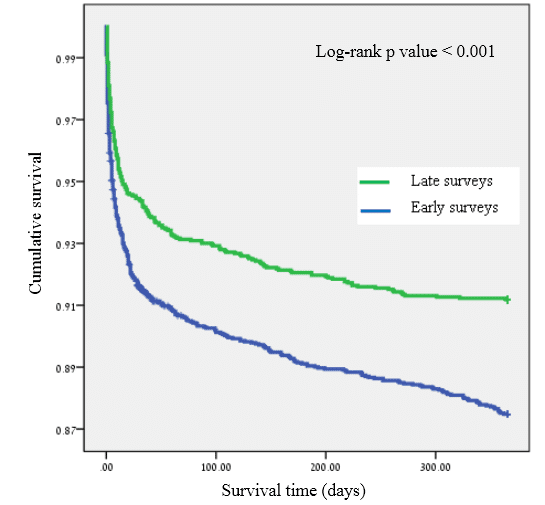Background: The acute treatment of STEMI has changed dramatically during the passing decade with the establishment of primary PCI as the preferred approach for primary reperfusion.
Methods: We evaluated time-dependent changes in the clinical characteristics, management strategies, and outcomes of patients with ST elevation myocardial infarction (STEMI) enrolled in the biannual Acute Coronary Syndrome Israeli Survey (ACSIS) between 2000 and 2010. This population was divided into an early and late period and compared.
Results: A total of 5474 patients presenting with STEMI were enrolled and included in this analysis. Patients in the later period had a higher prevalence of hypertension, hyperlipidemia and obesity but were slightly younger (p for trend <0.001 for all) and had a lower rate of renal failure. The time leg form symptom onset to ER arrival had not changed (p= 0.853). Patients tended to present with lower rates of heart failure as reflected by lower KILIP scores (p for trend <0.001). There was a dramatic change in the acute medical therapy, mainly a steep increase in rates of primary percutaneous coronary intervention (PCI) paralleled by a decrease in the use of fibrinolysis (p for trend <0.001). We found a significant decrease in un-adjusted mortality in later period. After adjustment to acceptable covariates, primary PCI was associated with a 30% reduction in 1 year mortality (HR 0.7, p=0.037).
Conclusion: In patients with STEMI, mortality has decline significantly during the last decade. This may have been attributed to lower rates of severe co-morbidities coupled with the implementation of primary PCI therapy.


